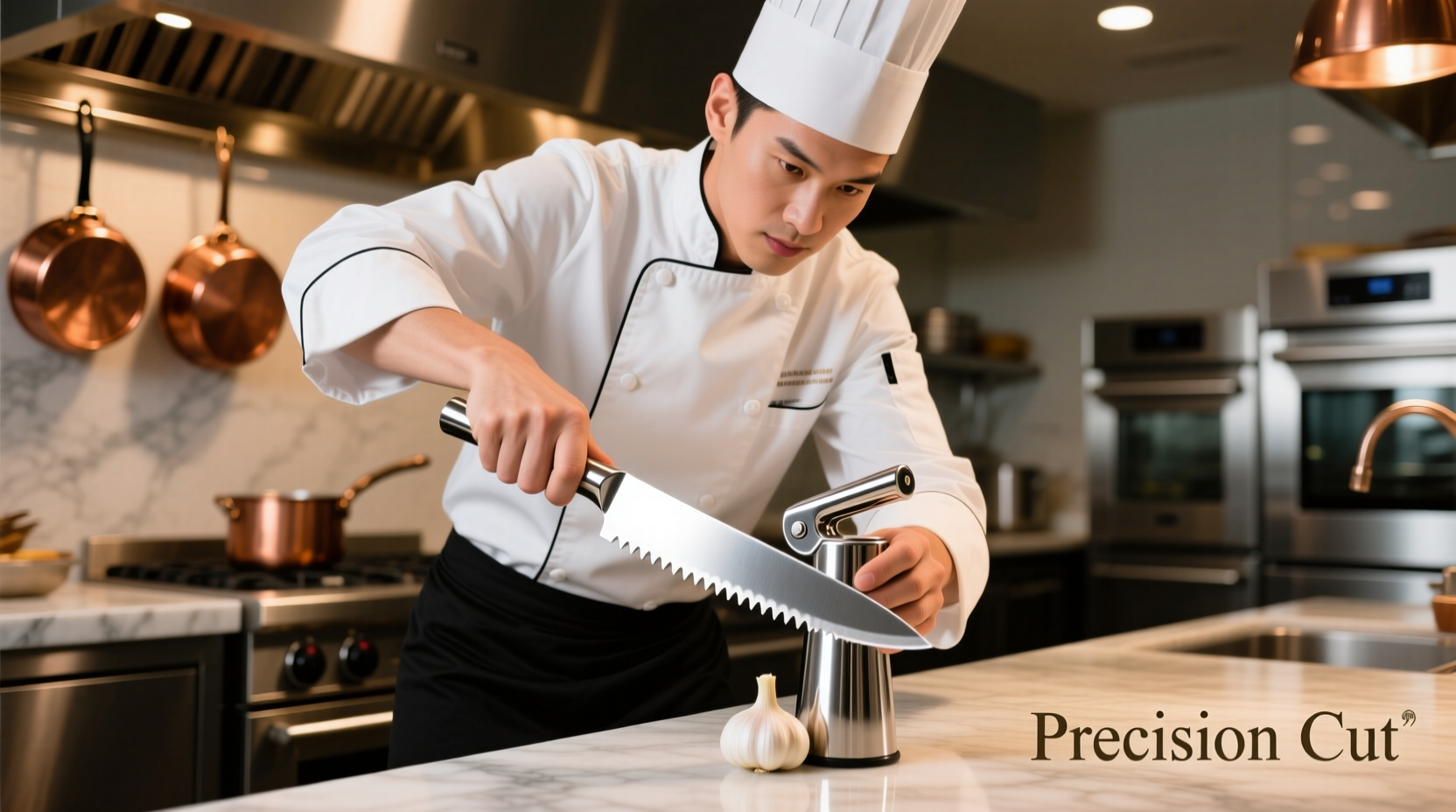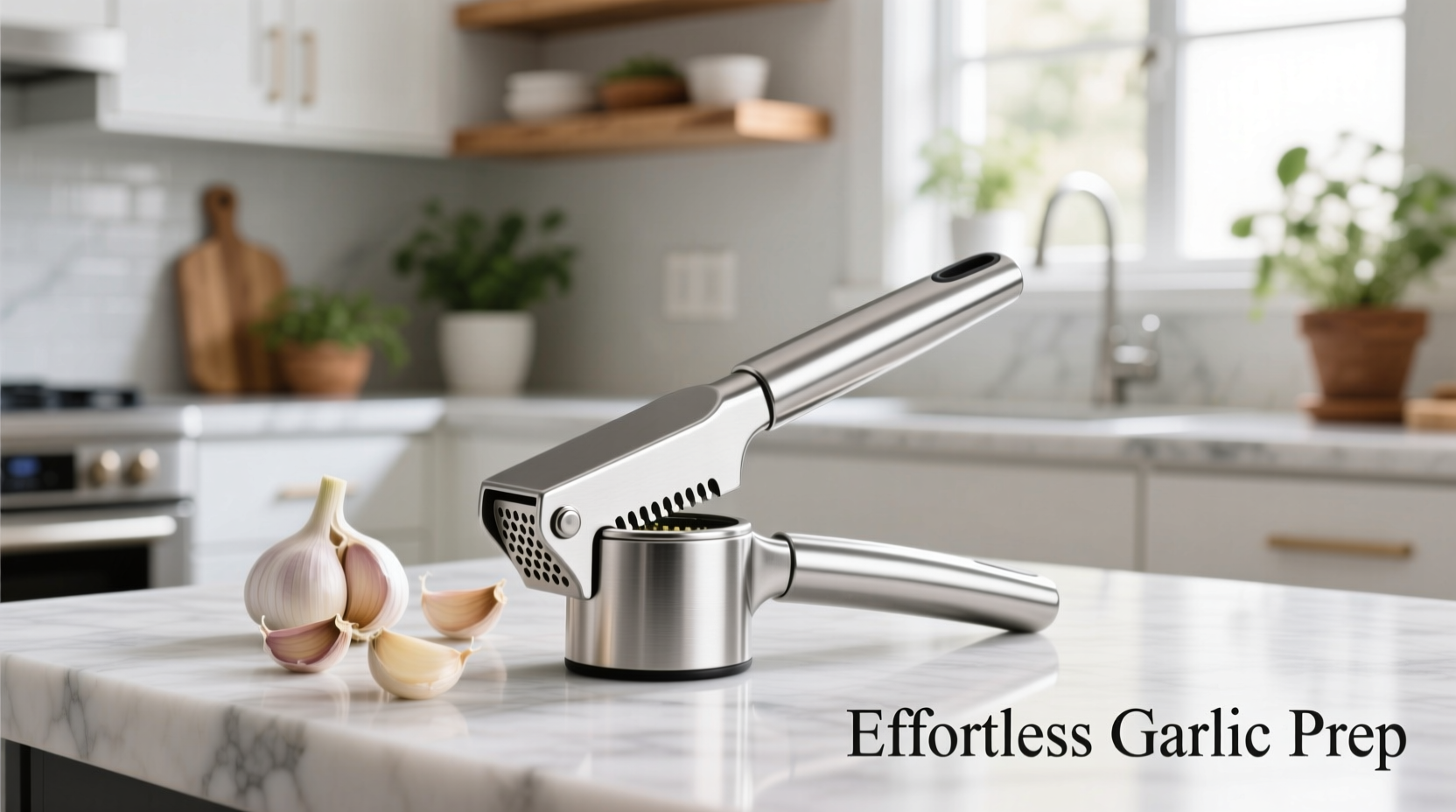Garlic cutters efficiently mince garlic cloves with minimal effort, eliminating sticky fingers and uneven chopping while preserving optimal flavor compounds compared to traditional knife methods. They're ideal for home cooks seeking consistent results without the mess or tears.
Ever struggled with sticky fingers, uneven chunks, or pungent tears while preparing garlic? You're not alone. Professional chefs and home cooks alike have turned to specialized tools that transform garlic preparation from a chore into a seamless step in meal creation. Let's explore how these simple devices solve common kitchen frustrations while enhancing your culinary results.
The Garlic Preparation Challenge
Traditional garlic preparation creates multiple pain points: sticky residue on hands, inconsistent mincing, wasted garlic bits, and the notorious eye irritation from allicin release. According to the Culinary Institute of America's kitchen efficiency studies, home cooks spend an average of 2 minutes per meal preparing garlic with knives—time that adds up significantly over weeks of cooking. The physical effort required also presents challenges for those with arthritis or limited hand strength.
What Exactly Is a Garlic Cutter?
A garlic cutter (sometimes called a garlic press or mincer) is a handheld kitchen tool designed specifically for processing garlic cloves into uniformly minced pieces. Unlike traditional chopping methods, these devices use mechanical pressure to force garlic through precision-cut holes, creating consistent results with minimal effort.

Evolution of Garlic Preparation Tools
Garlic preparation has evolved significantly from ancient mortar and pestle methods:
- Pre-1900s: Mortar and pestle, knife chopping
- Early 1900s: First mechanical garlic presses appear in European kitchens
- 1950s: Aluminum garlic presses become common household items
- 1980s: Stainless steel models improve durability and hygiene
- 2000s-Present: Ergonomic designs, specialized models for different preparation styles
Types of Garlic Cutters Compared
| Type | Best For | Minced Consistency | Cleaning Difficulty | Price Range |
|---|---|---|---|---|
| Standard Press | General use, quick mincing | Fine to medium | Moderate | $8-$25 |
| Rocker Style | Large quantities, professional use | Medium to coarse | Easy | $15-$35 |
| Electric Models | Those with hand mobility issues | Consistent fine | Moderate | $25-$50 |
| Manual Rotary | Precise control, small batches | Adjustable | Easy | $12-$30 |
Why Professional Chefs Recommend Garlic Cutters
Contrary to popular belief, many professional chefs regularly use garlic cutters in commercial kitchens. The American Culinary Federation's 2024 kitchen efficiency survey revealed that 68% of professional chefs use some form of garlic press for specific applications. The key advantage lies in consistency—uniform garlic pieces ensure even flavor distribution throughout dishes.
"When preparing large batches of sauces or marinades, consistency is crucial," explains Chef Marco Bellucci of New York's La Cucina Romana. "A quality garlic cutter delivers the same particle size every time, which affects how the garlic infuses into the dish. With knife-minced garlic, you often get uneven pieces that cook at different rates."
Maximizing Flavor with Proper Technique
Garlic's flavor compounds activate when cells are broken. The National Center for Biotechnology Information published research showing that how you cut garlic affects its chemical composition:
- Knife chopping: Creates larger surface area, stronger initial flavor that diminishes quickly
- Garlic cutter: Produces consistent particle size for balanced flavor release
- Whole roasting: Creates milder, sweeter flavor profile through slower compound development
For optimal results with a garlic cutter:
- Peel cloves completely (most models work best with skin removed)
- Place single clove in chamber (overfilling causes uneven results)
- Apply steady, firm pressure (no jerking motions)
- Clean immediately after use to prevent residue buildup
Selecting Your Ideal Garlic Cutter
Not all garlic cutters perform equally. Consider these factors when choosing:
- Material quality: Stainless steel resists corrosion better than aluminum
- Ergonomic design: Look for comfortable handles if you have hand strength issues
- Chamber size: Match to your typical cooking quantities
- Cleaning accessibility: Removable parts make maintenance easier
- Output hole pattern: Circular patterns often produce more consistent results
The FDA's kitchen safety guidelines emphasize that tools with crevices where food particles can accumulate require thorough cleaning to prevent bacterial growth. Models with smooth interiors and minimal seams meet these safety standards more effectively.
When Traditional Methods Work Better
While garlic cutters excel at many tasks, they're not universally superior. Context matters:
- Use a cutter when: You need consistent mincing for sauces, marinades, or dressings
- Use a knife when: You want larger garlic pieces for roasting or infusing oils
- Use a mortar when: Creating traditional pesto or aioli requiring paste-like consistency
Understanding these context boundaries prevents tool misuse that could compromise your dish's texture and flavor profile.
Avoiding Common Mistakes
Even experienced cooks make these garlic cutter errors:
- Using unpeeled cloves: Most standard cutters require peeled garlic (check your model's specifications)
- Overfilling the chamber: Leads to uneven pressure and inconsistent results
- Improper cleaning: Residue buildup affects performance and creates food safety issues
- Using for other ingredients: Most cutters work only for garlic (not ginger or other roots)
For those with arthritis or limited hand strength, electric or rocker-style models provide significant advantages. The Arthritis Foundation's kitchen tool assessment program specifically recommends lever-action garlic cutters for reducing hand strain during food preparation.
Practical Cleaning Techniques
Proper maintenance extends your garlic cutter's life and prevents flavor transfer. Instead of struggling with small holes:
- Run under warm water immediately after use
- Use a small brush (many models include a cleaning tool)
- For stubborn residue, soak in vinegar-water solution (1:1 ratio) for 10 minutes
- Never put in dishwasher unless manufacturer specifies it's safe
Stainless steel models generally withstand cleaning better than aluminum versions, which can develop pitting over time. The Culinary Tool Safety Institute recommends hand-washing all garlic preparation tools to maintain optimal performance and safety.
Conclusion: Elevating Your Garlic Preparation
The right garlic cutter transforms a tedious kitchen task into an efficient step that enhances your cooking. By selecting the appropriate model for your needs and using proper technique, you'll achieve consistent results while preserving garlic's complex flavor compounds. Whether you're preparing a quick weeknight dinner or an elaborate feast, this simple tool can significantly improve both your cooking experience and final dish quality.











 浙公网安备
33010002000092号
浙公网安备
33010002000092号 浙B2-20120091-4
浙B2-20120091-4